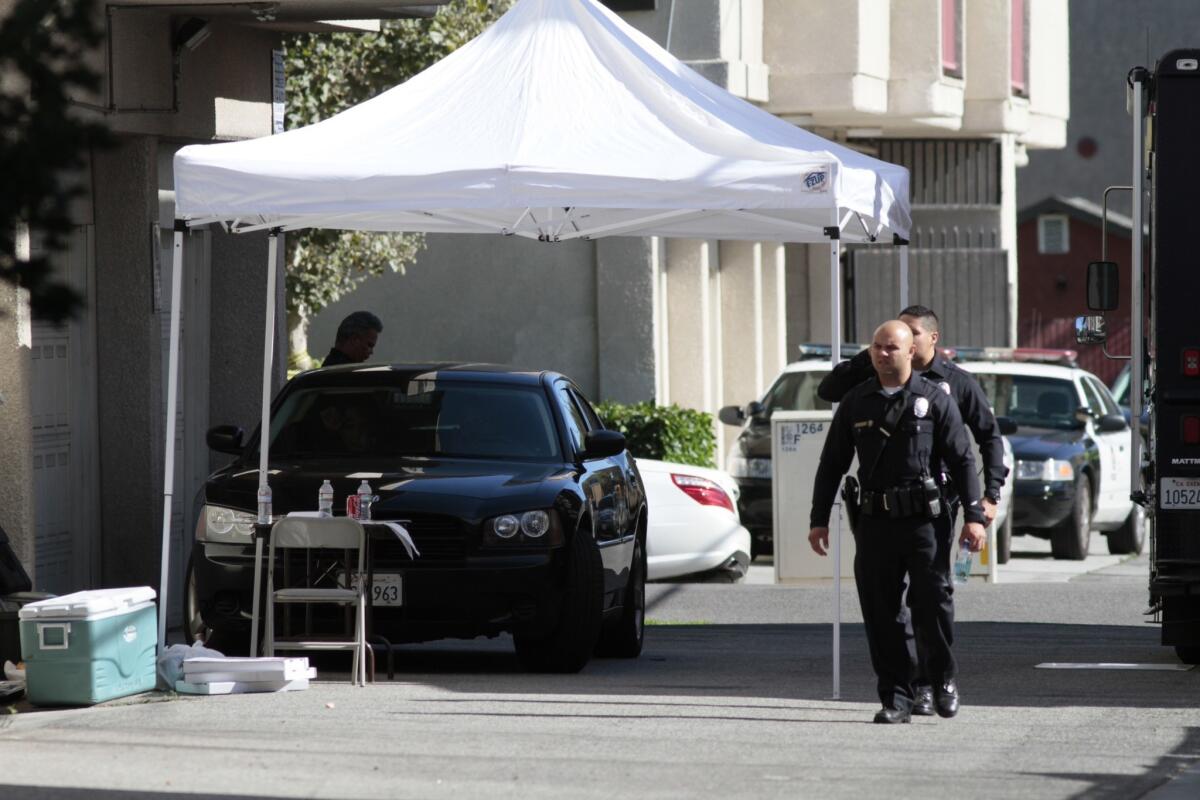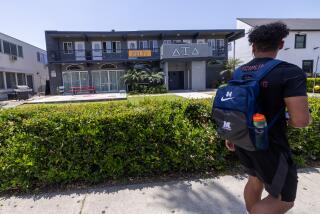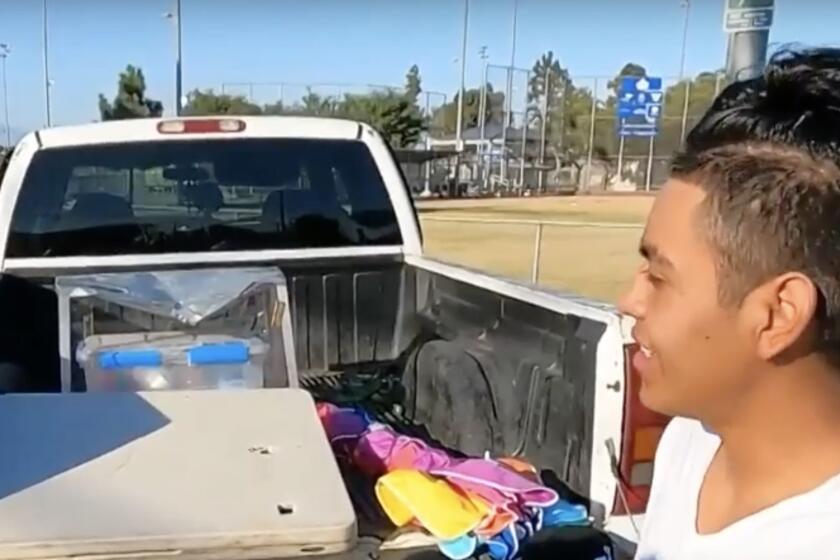Protecting innocence to quash crime

A few weeks ago, I watched LAPD Assistant Chief Earl Paysinger salute the largest-ever graduating class of teenage cadets in a ceremony at USC’s Galen Center, where he congratulated them for their commitment to public service.
Last week, Paysinger was back in the same neighborhood for a very different reason. He pulled over on Figueroa Street and opened a laptop, saying he wanted me to see the faces of the teenage suspects in the horrific July 24 murder of a grad student.
The screen lit up and five kids were staring up at me, ages 14 to 19. Three boys, two girls, none of whom looked particularly menacing or even out of the ordinary. But the eldest four are charged with murder in an apparent robbery attempt, and the youngest is believed to have been present when the 24-year-old Chinese student was savagely beaten with a bat and possibly a wrench.
His first thought after this murder, Paysinger said, was of the novel “Lord of the Flies.”
“The plot revolves around a lack of leadership and humanity …and how these young people devolved into something horrific.”
For more than 40 years now, Paysinger has been studying the ways in which kids who start out innocent grow up lost, scared and ultimately enraged, becoming capable at shockingly young ages of destroying lives or becoming victims themselves.
Violent crime in greater Los Angeles is so routine in some parts of town, it often attracts no media attention. But Paysinger said three off-campus murders near USC in two years is an obvious concern that “allows us — forces us — to think about the others.”
Just above the photos of the teens on Paysinger’s computer screen was a photo of Xinran Ji, the student who was murdered. Ji wears a soft, unassuming smile in the photo. The engineering student was attacked about 12:45 a.m. after leaving a study group and walking a friend home.
Police believe he was clubbed, struggled to get away, and was beaten a second time. Despite the head blows, he managed to circle the block and make it home to his apartment, where his roommate found him dead.
Paysinger started the car and we drove to where Ji was first assaulted. It’s a pretty neighborhood, a mix of apartments and older wood-framed homes with mature shade trees. Paysinger called it an “almost idyllic” setting but for the fresh memory of the last, terrifying moments of a young man’s life.
“The detectives literally just followed the blood trails,” Paysinger said.
“I can’t imagine that anguish, that grief,” he said of the victim’s parents. “Those poor people send their son to America, you know, for an opportunity, and he ends up like this. It’s just really unimaginable.”
In 2006, when Paysinger left his post as South Bureau chief, we talked about one of his pet peeves. He’d be out on patrol late at night, he said at the time, and see kids running in the streets. Here was another case of that, I said, in the Ji murder. And the teens are suspected of pulling a robbery at Dockweiler Beach after the murder.
“A rational parent would go into the room in the evening to do a check and see if the kids are well, or asleep or doing their homework, because that’s what parents do. You have to wonder if their parents even knew or cared,” Paysinger said.
Good question. All that was known last week was that the murder suspects were Jonathan DelCarmen, 19; Andrew Garcia, 18; Albert Ochoa, 17; and Alejandra Guerrero, 16, all of whom are being charged as adults. Federal officials said DelCarmen told them he entered the country illegally about seven years ago.
On the street where Ji died, students were moving out or moving in for the fall semester the day Paysinger and I drove through. The ones I spoke to said it’s important to be cautious in any big city, but they didn’t feel particularly unsafe near USC.
“It happens everywhere in the world,” said Xiao Xiao Gong, who was moving out because she had just graduated. “Brutal things happen in China as well as in other countries.”
When he was a rookie, Paysinger said, he thought the best and only answer to urban crime was cuffing criminals and locking them up. But as he came to understand the social, economic and educational collapse that feeds crime, he began trying to steer kids right in hopes he’d never have to chase after them.
Not that it’s always a sure bet. Paysinger spoke with great regret about a young man he and others helped mentor when he was in South Bureau, only to see him end up in jail.
“It was his environment, the housing development, it was gangs, it was poverty,” Paysinger said, and he couldn’t match “the gravitational tug” of all those forces.
A cop can’t fix all that, I said.
Of course not, Paysinger said. Can’t prevent all crime, either.
“But you never run out of seven-digit booking numbers, so you have to ask yourself whether or not you feel compelled to emphasize what matters most — education, prevention, intervention — because you know it works. It’s not a Madoff scheme, brother. This is an investment in something that has the potential to pay huge dividends.”
The 652 graduating police cadets may have set a record a few weeks ago, but Paysinger said 900 teens have enrolled in the current class.
It offers some hope, he said, in a city so tragically familiar with despair.
More to Read
Sign up for Essential California
The most important California stories and recommendations in your inbox every morning.
You may occasionally receive promotional content from the Los Angeles Times.










